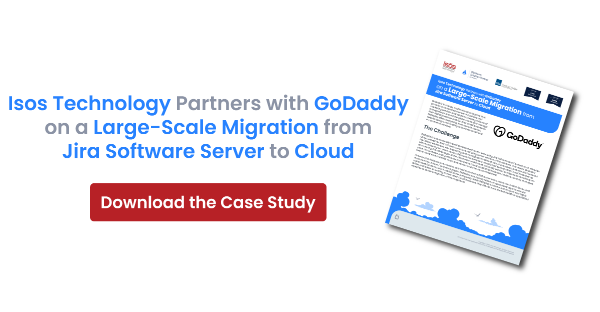 Atlassian takes a shared responsibility approach to the resiliency of its cloud solutions. That means Atlassian takes responsibility for ensuring high-availability, reliability, and recoverability of its infrastructure, products, and services, but it’s your job to put a disaster recovery program and business continuity plan that ensures that you can still run your business in the event of an unplanned event. What this means in practice is that If Atlassian has an issue with their systems, you are well covered, but you need to be prepared to take action if the problem is on your end.
Atlassian takes a shared responsibility approach to the resiliency of its cloud solutions. That means Atlassian takes responsibility for ensuring high-availability, reliability, and recoverability of its infrastructure, products, and services, but it’s your job to put a disaster recovery program and business continuity plan that ensures that you can still run your business in the event of an unplanned event. What this means in practice is that If Atlassian has an issue with their systems, you are well covered, but you need to be prepared to take action if the problem is on your end.
For instance, what if a password gets compromised, a bad actor accesses your system, and critical data gets deleted? Or someone on your own team makes a configuration change that has unintended consequences or worse yet, accidentally deletes a whole project? Will you be able to quickly restore all or some of your data right up to the point in time the issue occurred and get back to business? If so, how quickly?
While these scenarios may not be very likely, we have seen it happen, and that’s precisely the reason we recommend that you establish a way to back up your systems regularly somewhere off your network.
If you’re not currently backing up your data, we’ve rounded up some options for you, as well as some things to think about so you can figure out what’s best for your company.
Backup Options
Manual Backups
It is possible to manually create a backup of your Jira Cloud site, including attachments, and most data can be exported, but there are some exceptions. For example, automation rules aren’t automatically exported, so you have to do that manually. Keep in mind that if you include attachments in your backup, you have to wait 48 hours before backing up again. Another caveat: manual backups only support restoration of the full site, not more granular backup and restoration like a single project or issue.
This is the most time-consuming and labor-intensive of your options, and you are wholly responsible for maintaining the backup cycle, data from that backup, and the location where that data is stored.
Learn more about manually backing up Jira Cloud.
Third-Party Marketplace Apps
There are several third-party apps in the Atlassian Marketplace that you can purchase for backing up your Jira Software, Jira Service Management, and Confluence Cloud instances. Depending on the app, these generally provide both automated daily and on-demand backups and automatic data recovery for both individual items and your entire instance. It is important to note, that these apps would have to be purchased per licensed Atlassian Cloud product you intend to backup.
If you go this route, familiarize yourself with the vendor’s documentation, and make sure that their policies align with your company’s internal policies, especially regarding security and data residency.
Backup and Restore-As-A-Service
One of the most reliable ways to ensure you can quickly restore all or some of your data is by contracting with a backup and restore service provider. These providers offer purpose-built backup and restore solutions specifically for products in the Atlassian ecosystem. These typically have dashboard panels where you can view the status of your backups and restore some or all of your data as needed. We’re more than happy to leverage our partnerships and assist you if this path is desired.
Custom Solutions
For organizations that need a more customized approach, Isos has worked with several clients to develop highly automated solutions that meet their needs.
Getting Started
If you aren’t already backing up your systems, the time to start is now. The following are some things you’ll want to think about and steps you’ll need to take to establish a plan and put a solution in place.
Review Atlassian’s Documentation Around Shared Responsibility
First things first you’ll want to get a clear understanding of how you're covered and what gaps you need to fill. Atlassian provides a couple of great resources for you, including a whitepaper.
- Read about Atlassian’s approach to resilience
- Download the Atlassian Cloud Security Shared Responsibilities whitepaper
Review Your Compliance Parameters and Customer Agreements
Specific industries are subject to regulations and compliance parameters that dictate how often your data needs to be backed up, how your data can be stored and moved, and where it can be stored. Make sure you understand what these are since they will have an impact on what solution you use, how often you backup, where your data is stored, how long you retain your data, etc.
Assess Your Level of Acceptable Risk
When selecting a solution for your company, downtime is a crucial factor to consider. It's important to ask yourself realistically how long your company can afford to be down. This answer will play a major role in determining which solution is best for you and how frequently you need to backup your systems. The key here is to be able to quickly restore your systems to a given point in time, both in full and in part. That “in part” part is important–no one wants to have to do a full system restore if the problem is isolated to a smaller subset of data.
Establish an Internal Backup and Retention Policy and Processes
Next, you must establish formal policies around what needs to be backed up, how often, how long you will retain it, and who will be responsible for it. Your policies should be aligned with your level of acceptable risk, as well as any industry-specific regulations, compliance mandates, and customer agreements.
Be sure to document your policies and processes in writing and review them with key stakeholders on a regular cadence.
Choose a Solution
How and where will you back up your systems? Will you take a manual approach, use an app, or Backup and Restore as a Service provider? If none of these options seems like the right fit, you can always go the custom route.
You don’t have to go it alone! if you need help establishing policies and processes around backup and recovery for your Atlassian Cloud instance or if you need help determining what the best solution for your circumstances is, and even setting it up. The team at Isos would be happy to help!
Start Backing Up Your Systems!
Trust us, you’ll sleep easier knowing that you have a backup plan and a literal backup of your instance in place.
Sign up to receive more great content
Learn more about Atlassian and how Isos can help by signing up to receive our latest blogs, eBooks, whitepapers and more.














